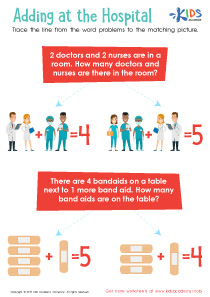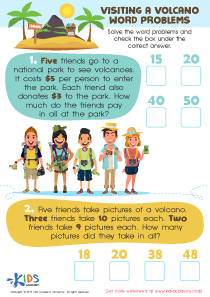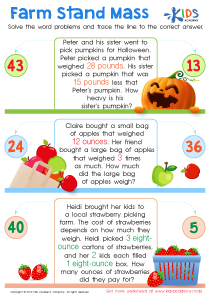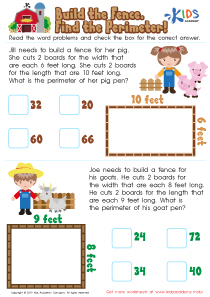Normal Graph Word Problems Worksheets for 7-Year-Olds
1 filtered results
-
From - To
Introduce your seven-year-old to the exciting world of graphs with our Educational Interactive Worksheets focused on Normal Graph Word Problems. Designed to captivate young minds, these worksheets blend fun and learning in a visually appealing format that encourages engagement and comprehension. Each sheet is crafted to enhance your child's analytical skills through age-appropriate graph-based problems, promoting critical thinking and problem-solving abilities. Perfect for home or classroom use, our worksheets make understanding graph concepts a breeze. Dive into our educational interactive worksheets and watch your child enjoy mastering new skills with each graph they explore!
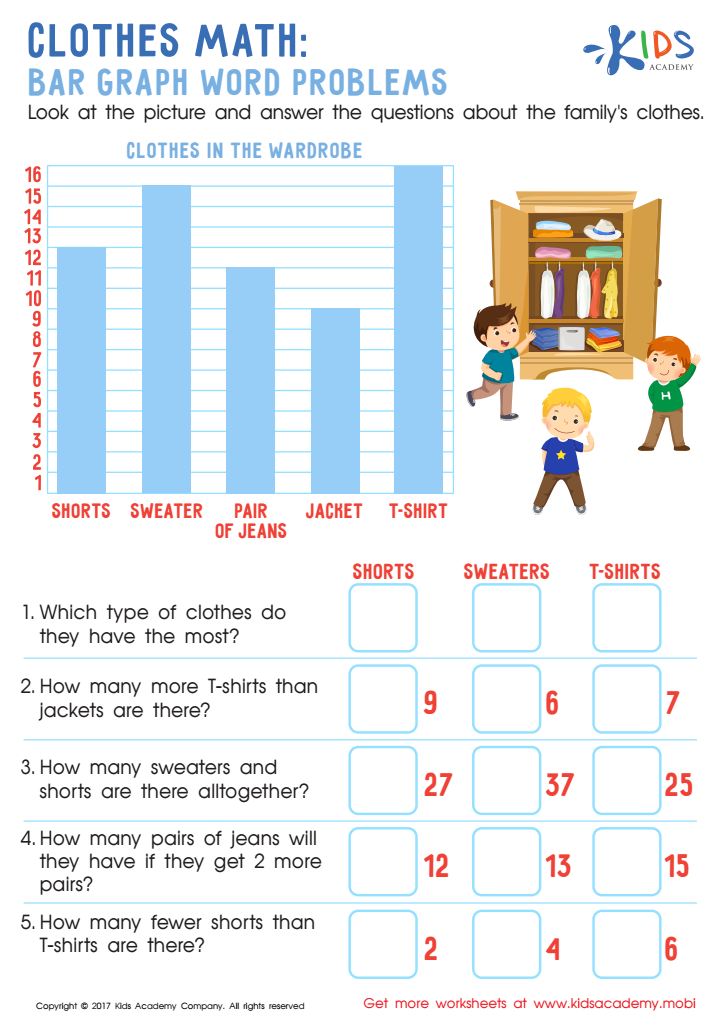

Clothes Math: Bar Graph Word Problems Worksheet
Normal worksheets on Graph Word Problems are a brilliant tool tailored for children around the age of seven years old. These educational interactive printables are not just sheets of paper; they are a gateway to understanding complex concepts through engaging and age-appropriate challenges. In this detailed overview, we will explore the reasons why these worksheets are essential in fostering young learners' development in both mathematical and analytical skills.
Cultivating Early Analytical Skills
Graph word problems are a fantastic method to introduce children to the concept of data interpretation and analysis. At the age of seven, children are just beginning to grasp more complex mathematical concepts beyond basic addition and subtraction. These worksheets provide scenarios in which learners have to interpret data presented in graph format and answer questions based on their understanding. This early introduction to data handling and interpretation lays a strong foundation for more advanced mathematical concepts and real-world problem-solving skills.
Enhancing Problem Solving Abilities
Educational interactive printables designed for graph word problems encourage children to apply their learning in practical scenarios. The problems are often framed around familiar contexts, such as counting animals, comparing fruit quantities, or understanding traffic patterns. By relating these problems to real-life situations, children find the exercises more relatable and engaging, which naturally enhances their problem-solving skills. They learn not only to read the data but also to analyze it in terms of real-world applications.
Building Confidence with Mathematics
It is crucial to build confidence in young learners, and normal worksheets on graph word problems do just that by providing a structured learning environment. Each worksheet is typically designed with progressive levels of difficulty, which means that children can start with simpler problems and gradually tackle more challenging ones as they become more comfortable with the concept. This progression is key in building their confidence, as they see tangible evidence of their improvement and mastery over time.
Promoting Interactive Learning
One of the standout features of these educational interactive printables is their interactive nature. Unlike traditional teaching methods, which may rely heavily on rote memorization, these worksheets encourage children to actively engage with the material. They might include elements where children can draw their graphs, color code data, or use stickers to represent figures, making the learning process much more hands-on and enjoyable. This interactive aspect helps in retaining their attention and improving their learning retention.
Support for Diverse Learning Styles
Graph word problems worksheets cater to diverse learning styles. Some children might find visual learning more appealing, where colors and shapes help them to better understand and retain information. Others might benefit from a logical or linguistic approach, where the wording of the problems and the sequence in which information is presented plays a crucial role in their understanding. By integrating graphical data with word problems, these worksheets appeal to various preferences, ensuring that every child finds a comfortable learning pathway.
Encouraging Curiosity and Exploration
Graph word problems also stimulate curiosity and prompt further questions about the world around them. As children analyze different sets of data, they might begin to ask questions about why certain patterns exist or how different elements compare with each other. This inquisitiveness is a key component of effective learning and critical thinking. Educational interactive printables are designed to nurture this curiosity, providing just enough challenge to push children to explore further without overwhelming them.
Supporting Parent and Teacher Involvement
Another significant advantage of these worksheets is how they facilitate involvement from parents and teachers. As children work through the problems, adults can guide them, provide explanations, and discuss the real-world implications of the data they are analyzing. This interaction not only enhances the learning experience but also strengthens the bond between the child and the adult, making learning a shared journey rather than a solitary task.
Conclusion
Normal worksheets on Graph Word Problems, particularly those crafted as educational interactive printables, are more than just tools for teaching mathematics; they are comprehensive educational resources that promote analytical thinking, problem-solving, and a deeper understanding of how mathematical concepts apply in everyday life. For seven-year-olds, these worksheets serve not only as an introduction to graph interpretation and analysis but also as a platform to build confidence, engage interactively with content, and cater to diverse learning styles. By integrating these tools into the learning process, educators and parents can provide children with the skills they need to succeed in their ongoing educational endeavors.

 Assign to the classroom
Assign to the classroom
